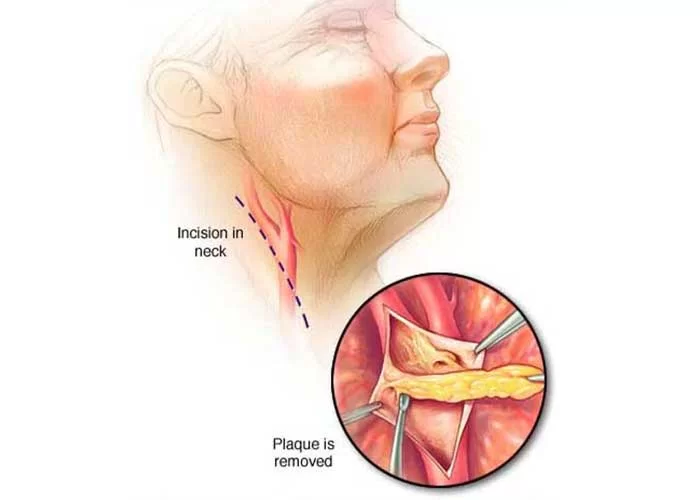Carotid Angioplasty

Carotid Artery Stent
It is a procedure that can be used to open narrowed carotid arteries. It is also called carotid angioplasty and stenting. Stroke is a Brain Attack. Stroke commonly causes paralysis of an arm or leg or one side of the body. It is the third-largest cause of death, after cancer and heart disease.
A stroke occurs due to
1) Brain Hemorrhage: bleeding in the brain tissue due to the rupture of a blood vessel.
2) Embolism: blockage of the blood vessel of the brain due to a clot.
Carotid and vertebral arteries, one on each side of the neck, supply the blood to the brain. Lipid material in the walls of the Carotid arteries may break off and go into the brain, causing a Stroke. 20% of patients who suffer from Paralysis may actually have stenosis in their Carotid arteries. Therefore in all cases of Stroke, it is necessary to investigate the Carotid Arteries.
Symptoms of Carotid Artery Vertebral Artery Narrowing?
1) Temporary one-sided weakness.
2) Temporary one-sided numbness in the hands or legs, or face.
3) Speech is slurred.
4) Temporary loss of sight.
5) Loss of balance.
6) A sudden feeling of giddiness/blackness in front of eyes.


Diagnosis of Carotid Artery Narrowing?
1) Detailed history for symptoms.
2) Palpate the carotid artery pulse in the neck.
3) Color Doppler arterial Doppler study (Sonography) of the Carotid artery, which will demonstrate the extent and severity of the narrowing.

How dangerous is the Carotid artery narrowing?
Patients with no symptoms, but a narrowing of more than 75% have a 2 to 5% incidence of Stroke in the first year. In Symptomatic patients with a narrowing of more than 75% the chances of a Stroke are more than 12% to 13% in the first year.


Carotid Angioplasty:
Over the last few years, this treatment has revolutionized the treatment of Carotid artery narrowing and blockage. The technique of opening the artery without surgery means that almost all patients with blockages are suitable for this technique. A stent is placed in the carotid artery to prevent restenosis. Carotid angioplasty should be performed when:
1) >75% stenosis in Asymptomatic patients.
2) >60% stenosis in Symptomatic patients.

Advantages of Angioplasty of the Carotid Artery Over Surgery:
1) The procedure is done under local anesthesia. So it can be done in old patients, and also in patients who have
risk of general anesthesia, such as those with lung disease, liver disease, and kidney disease.
2) The procedure usually lasts only half-hour to one hour
3) The patient is usually discharged from the hospital the next day;
4) There are no cuts and stitches, so useful for diabetic patients.
5) The risk of death and complications of a stroke during the procedure is much less than that during surgery.
